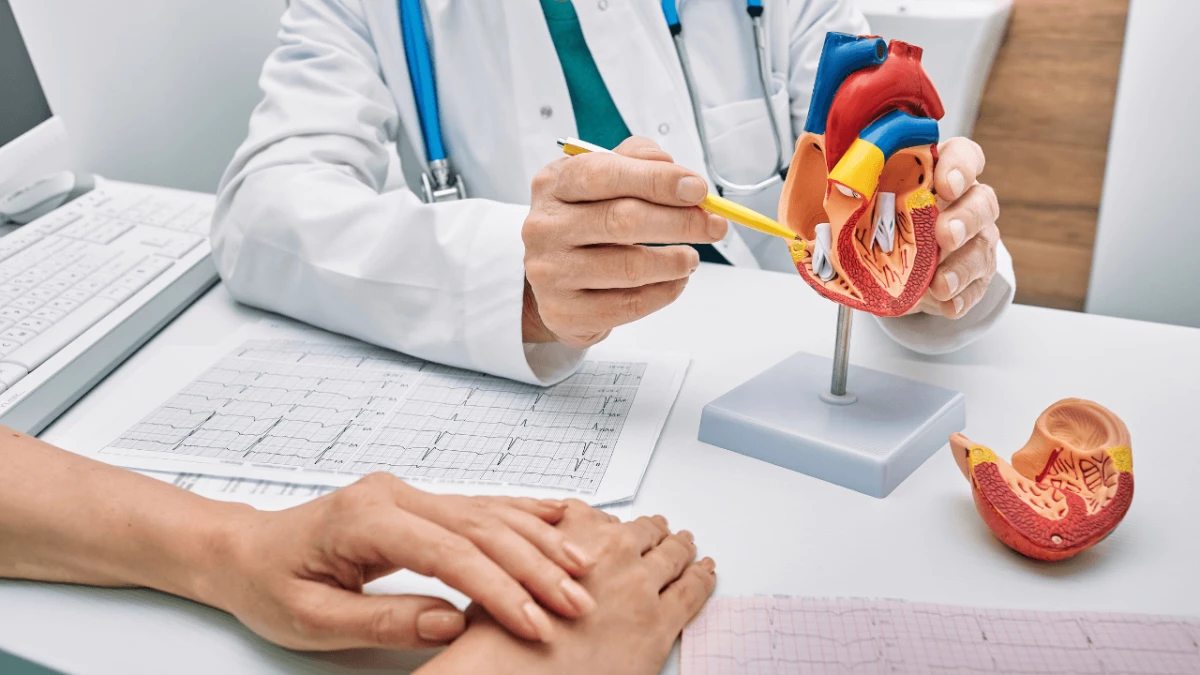The heart is the engine of our body – it works tirelessly to sustain life. Normally, its rhythm is steady and reliable, but sometimes it can “stumble” – beating too fast, too slow, or irregularly. These conditions are called arrhythmias and often remain unnoticed until they cause a serious problem. From simple palpitations to life-threatening conditions, heart rhythm disorders affect millions of people worldwide and require timely diagnosis and care. According to the World Health Organization, rhythm disorders are among the leading causes of morbidity and mortality, especially in people over the age of 60.
In today’s article, Dr. Emin Ahmed, cardiologist at VITA Hospital, explains the most important things patients should know about rhythm disturbances.
Rhythm and conduction disorders (RCD) represent a major group of cardiovascular diseases. Arrhythmias are disturbances in the formation or conduction of the heart’s electrical impulse. They can range from asymptomatic, clinically insignificant conditions to life-threatening disorders leading to sudden cardiac death. According to WHO data, rhythm disorders are one of the leading causes of morbidity and mortality, particularly in people over 60. Along with drug therapy, advances in medical technology have established a growing number of non-pharmacological treatments for these conditions. Rhythm pathology, also known as arrhythmia, is a group of conditions in which the heart beats too fast, too slow, or irregularly.
Normal cardiac activity is characterized by a precisely defined, consistent rhythm of contractions. The average heart rate changes with age: for newborns it is about 130–140 beats per minute, while in healthy adults over 18 years, the normal resting heart rate is between 60–100 beats per minute.
Heart rhythm disturbances (arrhythmias) may result from functional (extracardiac causes such as neuropsychiatric disorders, excessive use of stimulants, medications, alcohol, drugs, endocrine diseases, etc.) or organic (cardiac diseases) factors.
Types of arrhythmias:
- Tachycardia – accelerated heart rate above 100 bpm. Sinus tachycardia occurs in physiological states (stress, exertion, emotional tension), inflammatory diseases, or structural heart disease leading to heart failure or shock. It can also be caused by medications, stimulants, or other substances. Short episodes are usually harmless, but persistent tachycardia requires investigation.
- Bradycardia – slowed heart rate below 60 bpm. May be due to constitutional features (vagotonia), physiological states (sleep, anesthesia, athletic training), or pathological causes such as myocardial infarction, hypothyroidism, increased intracranial pressure, drug intoxication.
- Atrial fibrillation (AF) – the most common pathological arrhythmia worldwide, affecting more than 33 million people. AF increases the risk of stroke 5-fold and heart failure 3-fold. Causes include ischemic heart disease, valvular defects, thyrotoxicosis, etc. It may be acute (within 48 hours) or chronic. Depending on clinical management: paroxysmal, persistent, or permanent. AF often requires lifelong anticoagulation to prevent thromboembolic events.
- Atrial flutter – often reflects organic heart damage, but may also have extracardiac causes (thyrotoxicosis, metabolic disorders, intoxications).
Extrasystoles – premature beats (“skipped beats”). They may be atrial, nodal, or ventricular, and arise from increased excitability of a myocardial focus. Sometimes transient, but may worsen quality of life or require treatment.
-Ventricular tachycardia and fibrillation – life-threatening arrhythmias requiring emergency care.
Symptoms of arrhythmia may include palpitations, fatigue, shortness of breath, dizziness, weakness, fainting, chest pain or pressure, pallor, sweating. Risk groups include patients with valve disease, cardiovascular pathology, thyroid disorders, smokers, heavy drinkers, drug users, and those under stress or sleep deprivation.
Diagnosis involves physical examination, ECG, Holter monitoring, implantable loop recorders, stress testing, electrophysiological studies, echocardiography, CT, MRI, and laboratory tests (electrolytes, thyroid hormones, etc.).
Treatment options:
- Medication (antiarrhythmics, anticoagulants).
- Electrical cardioversion.
- Catheter ablation.
- Implantable devices (pacemaker, cardioverter-defibrillator).
Why early prevention matters:
Rhythm and conduction disorders are frequent in cardiology. Early diagnosis and adequate treatment significantly improve life expectancy and quality. Modern approaches include drug therapy, ablation, and implantable devices. Management requires a multidisciplinary team. Taking care of your heart today is an investment in your health tomorrow.




 On this page, you can change your choices at any time after you have read and understood our
On this page, you can change your choices at any time after you have read and understood our